#Nerd Know Better
Explore tagged Tumblr posts
Text

its quite shrimple actually
#[Intro: Docm77] Listen Grian Nobody touches my bush You're done [Verse 1: Docm77] It all started when Grian touched my redstone He played#himself like a xylophone set on automatic Doc Monster is a savage‚ with technical skills And crazy vocal acrobatics I’m a legend of NHO‚#with Etho‚ Beef and Double O DocMC is coming for you sevenfold Got Rendog and other firemen To douse the flames that you shoot at this#To douse the flames that you shoot at this leviathan Iskall can try again [Verse 2: Wels & Xisuma] Yo You think i’m hiding‚ I’m just biding#my time Putting pen to paper‚ coming up with rhymes We’re the star-studded group that got together just to crush you Once we start something#you know we're gonna see it through I'm the knight‚ the soldier who brings the fight at first light Y'all had to incite‚ so now I gotta#indict You're guilty of getting murdered with words Y'all are out-gunned‚ go home nerds Wohoo [Chorus: All] Hermit Gang Hermit Gang Hermit#Gang‚ Hermit Gang Hermit Gang‚ Hermit Gang Hermit Gang‚ Hermit Gang Hermit Gang‚ Hermit Gang Hermit Gang‚ Hermit Gang Hermit Gang Hermit#Gang Hermit Gang‚ Hermit Gang [Verse 3: False & Xisuma] If you think you can stop the symmetry‚ that's false G Team is dialing for help‚#but I'm ignoring their calls And when their bodies dissolve‚ you’ll know that False’s on a killing spree Try to stop my pvp and perish#painfully I'm the queen of hearts‚ heads and body parts Your diamond armor can’t compare to my martial arts I'll send a poison dart‚ to make#you breathe your final breath G Team's name will be the only thing left Yeah [Verse 4: Impulse] Caffeinated‚ animated‚ redstone innovator My#behavior's crazy‚ can’t phase me‚ impulse is never lazy (Uh) Tango‚ why would you betray me‚ now my scope is aiming (What) Without a sound‚#without no hesitation‚ my creations are amazing Better watch your step or the G Team will end up blazing Who's the better team? There is no#controversy But before it's said and done you'll be begging us for mercy (All-right) [Chorus: All] Hermit Gang‚ Hermit Gang Hermit Gang‚#Hermit Gang Hermit Gang‚ Hermit Gang Hermit Gang‚ Hermit Gang Hermit Gang‚ Hermit Gang Hermit Gang‚ Hermit Gang Hermit Gang‚ Hermit Gang#Hermit Gang‚ Hermit Gang [Verse 5: Xisuma] X gone give it to ya‚ I'm gone give it to ya X gone give it to ya‚ WHAT Lyrical boxing‚ dropping#blows on all my foes And the G Team they're looking unclean needing some sunscreen Getting burnt by words to hurt this herd of nerds It’s#absurd how my rhymes got them injured Danger‚ danger I got lasers to cut 'em up like razors It's flexin' season and I got flavor Their#Their weak defenses like trenches and fences That these dense heads are presenting [Bridge: Xisuma & Docm77] They're presenting them alright#they're not very good I could walk over that‚ I could jump over that I could use an ender pearl I could use my elytra Come on G Team‚ jeeze#Yo‚ I don't know what to say Um‚ let me think [Chorus: All] Hermit Gang‚ Hermit Gang Hermit Gang‚ Hermit Gang Hermit Gang‚ Hermit Gang#Hermit Gang‚ Hermit Gang Hermit Gang‚ Hermit Gang Hermit Gang‚ Hermit Gang Hermit Gang‚ Hermit Gang Hermit Gang‚ Hermit Gang [Verse 6:#Rendog] Now I'm back‚ got some things I wanna say (Yeah) Whats the letter that starts the alphabet‚ Ay Ladies gotta get in line‚ the#diggity's be on the way (Cliff) Cleo dont know who she freaking with (Ooh) All the signs say to notify her next of kin This diggity dog be#dropping bombs‚ nothing but hits (Ay) Spit that rhyme again (brrr)‚ 'cause the message is I can mumble rap and still be the best there is#(Woo-ah) [Chorus: All] Hermit Gang‚ Hermit Gang Hermit Gang‚ Hermit Gang Hermit Gang‚ Hermit Gang Hermit Gang‚ Hermit Gang Hermit Gang#Hermit Gang Hermit Gang‚ Hermit Gang Hermit Gang‚ Hermit Gang Hermit Gang‚ Hermit Gang [Outro: Mumbo] Oh you wanted me to do a verse? I’ll#I'll have to check with G Team- I mean uh‚ I'd have to‚ I'll have to check with my schedule And see if I can...see if I'm able to do that#sort of thing I'm a busy guy‚ got lots of ....things to do Yeah‚ I mean‚ I just don't know if its a good idea for me to be part of this song
287 notes
·
View notes
Text
You can’t be a Donnie enjoyer unless you acknowledge that he’s really fucking obnoxious and full of himself and HE IS NOT COOL and only then do you understand him
#STOP TRYING TO MAKE HIM COOL HES A LAME NERD#and he is AUTISM#I SAY ALL THIS WITH AFFECTION#I know him better than anyone#rottmnt#rise of the tmnt#rise of the teenage mutant ninja turtles#donatello#rottmnt donnie#me talking
357 notes
·
View notes
Text

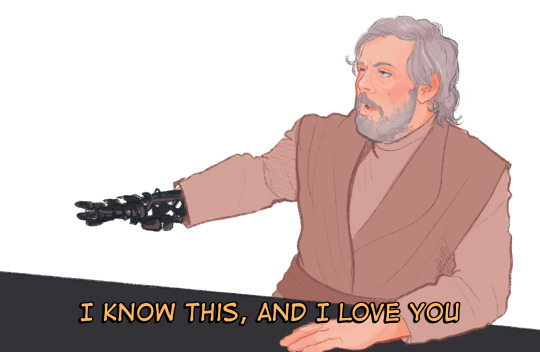
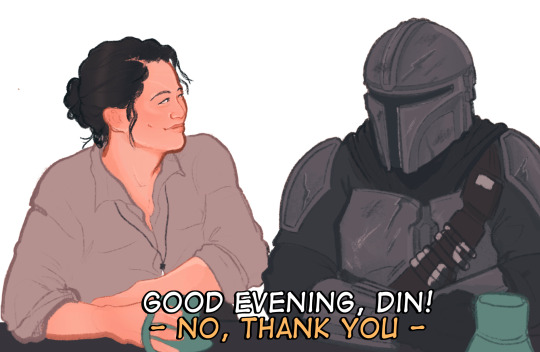
meager offerings to the PCU. am... i allowed to call it that? feels a bit egotistical [ID in alt text]
#the better star wars that exists in my head au#finn star wars#finn dameron#luke skywalker#rose tico#din djarin#pcu#yeah theyre drinking from raktajino mugs#i need you to know im a nerd#art#my art#fan art#star wars#star wars the sequel trilogy#star wars the original trilogy#it is shorter to write than tbswteimh au#but on the other hand.............................................. hate saying my own cienmatic universe#1k
4K notes
·
View notes
Text
The Demon Prosecutor 😈:
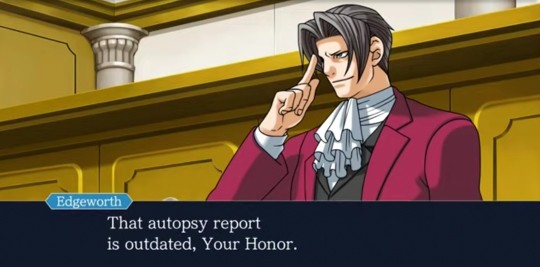

Also the Demon Prosecutor:
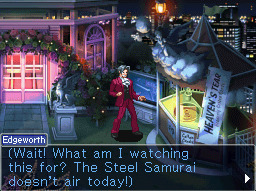
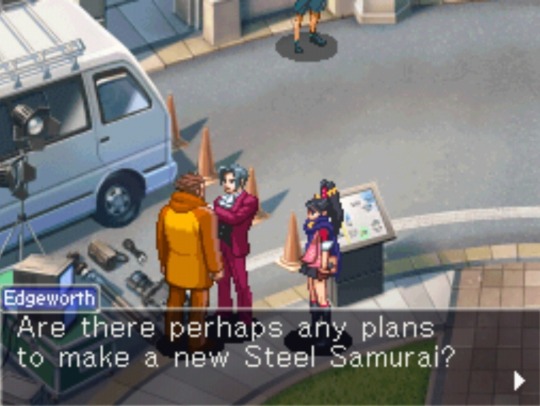
The Death God of the Old Bailey aka The Reaper of the Old Bailey ☠️:
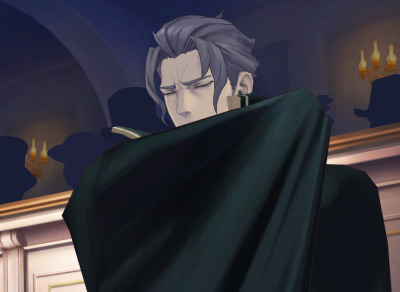
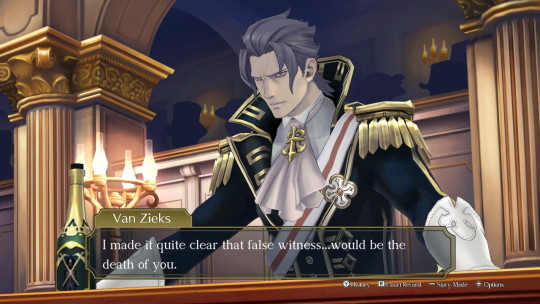
Also The Reaper of the Old Bailey:


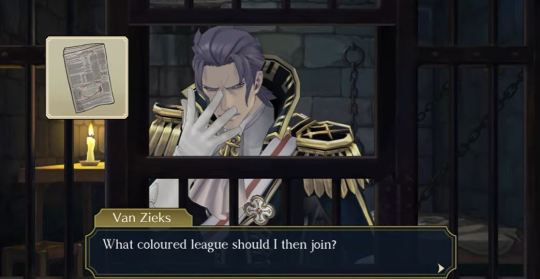
#nerds <3#miles edgeworth#barok van zieks#ace attorney#tgaac#the great ace attorney chronicles#dgs#dai gyakuten saiban#screenshots#dgs spoilers#tgaa spoilers#i know edgey was only a demon prosecutor in his first few years...but anyway#point still stands#his nickname was actually justified to some extent until he changed for the better...whereas barok never deserved such an unjustified title#i love them
274 notes
·
View notes
Text
which was more culturally significant, the renaissance or hermitgang
#it all started when grian touched my redstone he played himself like a xylophone set on automatic doc monster is a savage with technical#skills and crazy vocal acrobatics i’m a legend of the nho with etho beef and double o docmc is coming for you seven fold i got rendog and#other firemen to douce the flames that you shoot at this leviathan iskall can try again you think i’m in hiding i’m just biding my time#putting pen to paper coming up with rhymes were the star studded group got together just to crush you once we start something you know were#going to see it through i’m the knight the soldier who brings the fight at first light y’all had to incite so now i gotta indict you’re#guilty of getting murdered with words y’all are outgunned go home nerds hermitgangx16 if you think you can stop the symmetry that’s false#gteam is dialling for help but i’m in ignoring their calls and when their bodies dissolve you know that false’s on a killing spree try to#stop my pvp and perish painfully i’m the queen of hearts heads and body parts your diamond armour can’t compare to my martial arts i’ll#send a poison dart to make you breath your final breath gteams name will be the only thing left caffeinated animated redstone innovator my#behaviour’s crazy can’t phase me impulse is never lazy tango why would you betray now my scope is aiming better run from cover from all the#ghast balls that i be taming without a sound without no hesitation my creations are amazing better watch your step or the gteam will end up#blazing whos the better team there is no controversy but before it’s said and done y’all be begging us for mercy hermitgangx16 x gone give#it to ya i’m gone give it to ya x gone give it to ya what lyrical boxing dropping blows on all my foes and the gteam they’re looking#unclean needing some sunscreen burnt by words this herd of nerds it’s ubsurd how my rhymes got them injured danger danger i got lasers to#cut them up like razors it’s flexing season and i got flavour their weak defenses like trenches and fences that these dense heads are#presenting they’re presenting them alright they’re not very good i could walk over them i could jump over them i could use an ender pearl i#could use my elytra come one gteam geez hermitgangx16 now i’m back and i got some things i wanna say what’s the letter that starts the#alphabet a ladies get it line the diggity be on the way cleo don’t know who she freaking with all the signs say to notify her next of kin#this digitty dog be dropping bombs nothing but hits spit that line again brrr cause the message is i could mumble rap and still be the best#there is hermitgangx16 oh you wanted me to do a verse i’ll have to check with gteam i mean i’ll have to check my schedule to see if i can#see if i’m able to do that sort of thing busy guy lots of things to do oh do averse bananas do a verse bananas i just don’t know if it’s a#good idea for me to a part of this song really#i just typed all of that out from memory im a little bit insane i think
59 notes
·
View notes
Text
In the last scene in thanks to them, after flapjack sacrifices himself and hunter wakes up, you can. Like. FEEL luz's guilt. As soon as she's sure hunter is alive luz immediately removes herself from the situation. While camilla willow and gus are helping hunter up and checking that he feels okay, luz shuts her eyes and walks away from the group. She refuses to face her friends until they have to go to HER. Even before that, when the gang watched belos go through the portal, everyone else's expressions were of fear. But luz's expression was of resignation and determination.
She cant bear be around hunter. She cant even stand to look at him. Not when she blames herself for what happened to him and flapjack. Hunter would never blame luz for anything, but luz has a habit of taking every event that tangentially relates to her and twisting it to fit her self loathing. If she had helped look for belos better, maybe hunter wouldnt have gotten possessed. If she hadnt teleported to grab belos, maybe flapjack wouldnt have been close enough to get caught. We the audience know luz couldnt have stopped belos, but to her is just another item in her long list of mistakes.
Judging by her expression when hunter comes up to talk to her, luz is HORRIFIED at the new scars that belos gave him. (That she "let" belos give him) And i cant help but wonder how this new guilt is going to eat at her for the next two episodes. On top of the belos thing, the guilt she likely still has about leaving her mom and everything that happened with eda in the s1 finale, and everything with king, now one of her best friends (and family member she said shed protect!) has lost his palisman because of her. Every time luz looks at hunter shell be reminded of how he was hurt because of what she thinks are her mistakes.
Idk if theyll explore this in depth or even mention it because luz already feels really guilty about everything else and thats already going to take the whole finale to unpack. But this is one more thing for luz to tear herself up over and i cant wait to see how that goes
#the owl house#toh#shut up pandora#luz noceda#hunter toh#hunter noceda#thanks to them#i wonder if luz thinks hunter is mad at her for the possession thing#hunter would literally never be genuinely mad at luz for anything this serious#but i can see luz thinking oh i didnt believe him about seeing belos so he ran off and got possessed#and once he got possessed i teleported his palisman right to his palisman eating uncle#and even hunters 'inspiring speech' can be twisted by her even thouh he was obviously trying to make her feel better#when hunter said lets fight back for flapjack he meant like in flapjacks honor and maybe like a revenge thing#luz is somehow going to twist it into oh you were the reason flapjack died so you have to defeat belos to make up for it#even during the belos fight when luz teleported to him its giving misplaced guilt vibes#like yes her friends are all fighting so she wants to help#and yes luz is a certified nerd of course shes going to hug her brother and do the 'i know youre in there!' thing#but teleporting up to the goop man and grabbing him? its like she wants to get injured#she blames herself for hunter getting possessed so she thinks she shouldnt stand aside while her friends fight belos#and if anyone should risk getting injured to do the "i know youre in there' thing it should be her#luz babygirl you are SO mentally ill i cant wait to see you get iller#calling it now luz is going to sacrifice herself to save her friends and family and get horribly injured like eda and king in past seasons#she wont die ofc this is a tv y7 show and dying does nothing for her character arc#but she will suffer a LOT before camilla eda and amity can do the 123 combo of 'stop blaming yourself for everything and go to therapy'#*luz voice* hunter dana said its MY turn with the angst and wump#poor luz now she cant even be mentally ill with hunter anymore bc she might think hes mad at her#and one of the things shes mentally ill about is about him so he cant reflect that at her anymore#whos she going to be mentally ill to? herself#and itll keep going until she snaps i tell you
80 notes
·
View notes
Text
PSA: Nat’s ranting abt art! (again) What’s new?




for context ,, some people went to the museum of modern art in nyc and made a tiktok where they jokingly posed in front of all the paintings “they could’ve easily done themselves” and I knew scrolling through the comments would be a masochistic move even if the video itself was funny ,,, but I did it anyway and was punished for it 😭 like,,,

anyway,,, thinking about when Walter Benjamin said the rise of cinema and television and ad culture has led the masses to contemplate true art as a form of seeking out distraction:
“Reception of art now normally happens in a state of distraction. […] The public is an examiner, but an absent-minded one.”
People are no longer looking at art to seek but they’re looking at art to tell. Rothkos and Kleins don’t provide the adequate distraction for the public eye. The art and artists demand you seek outside of the work, or else it feels like a comical joke (if you’re not willing to do that). A joke that you’re not in on. Which is why so many people have so many problems with Modern Art.
Historicizing Art would tell you that the blue square was a completely new handmade pigment that had never been seen before! It was a completely new color that the artist had made! It would also tell you that the the technical level of artistry required to paint the blue completely smooth canvas was profound. Even the smallest brushstroke or fleck of dust on wet paint would cause texture and unwanted dimension. Furthermore, monochrome paintings were not common during this time. In fact Ives Klein’s blue square was one of the first of its kind. He wanted to viewer to spend a great deal of time with his paintings so that they would get lost in the color as one gets lost in the vastness of the ocean or the infiniteness of the sky. He wanted viewers to appreciate the color he so masterfully crafted. (he did not account for viewers looking at it for .2 seconds, scoffing abt how easy it looked to make, and then writing it off as a money laundering scheme) He not only invented a new painting but a new way to look at art. It’s a painting about the artists’ process, about his artistic mastery and level of skill. Its also about breaking the mold. That’s what it’s means. None of these things you could know from simply looking at the square. No one would expect you too. But asking questions, researching things that don’t make sense to you, talking to a museum curator, reading the wall text, popping onto to google, these are easy things to to do.
Also fun fact: A color blind Eddie Redmayne wrote his thesis on Ives Klein Blue because he was actually able to distinguish it from other hues for his Art History Thesis! That’s pretty cool!
Anyway, the point is, it makes me sad how quick people are to write off things they don’t understand. They don’t want to bother learning especially when it comes to art. Because the paintings no longer spell out exactly what is there and what it’s trying to say for the viewer, they become useless. Any further need for explanation is written off as pretentious. You don’t have to love modern art! But it would be nice if more people were at least open to trying to understand it a bit better.
#ARH talks#does this make me pretentious?? i don’t think so.#just because you don’t know or understand something doesn’t make it bad!!#and if we all asked questions instead of mocked#then everything would be a lot better around here a lot of the time!!#anyway everyone be proud of me I didn’t say anything on tiktok#i just took it to my tumblr blog lmaooo#but the thing is no one on tiktok would listen to me anyway as is evident from the comment section#rip the art history nerds out there who tried tho 🤧 fallen soldiers methinks#I’m with them in spirit and in the form of comment likes#one day I will be articulate enough to get all my thoughts out coherently !#when though? cant say#nat speaks#ramblings
101 notes
·
View notes
Text

Hollow Mind has ruined me but those outfits were sure something
#Constance's art#the owl house#toh#toh spoilers#hollow mind#darius toh#toh darius#toh eberwolf#eberwolf toh#raine whispers#dont @ me i didn't even bother to look up a ref for eber's.#i tried but i would have had to go into the episode to get a pic and that was too much work#mostly bc im having technical difficulties with my digital art where i have reconnect my things ever 2 seconds#but anyway eber has such a face they're like }:3#i love darius so much. and raine whispers my upmost beloved#love that they play multiple instruments true music nerd rep#(obviously they have to in order to be the head of the bard coven. but man its just so accurate)#yeah raine is literally me & one of my band friends (who plays every instrument ever)#no one better call raine's tin whistle a flute it is a TIN WHISTLE. and their main instrument is a VIOLA#(no hate if ppl didnt know. but now they do!)#anyway i need to post this before i hate it
181 notes
·
View notes
Text
Curious- are any of you guys musicians?
If so tell me what instrument(s) you play or if you sing or what. I wanna know!
#ya girl is a trumpet player lol#i play silly little jazz gigs with my silly little friends#but don't try to talk to me about jazz and expect me to know shit. i don't listen to it i just play it.#i like playing marches and shit better but nobody wants to pay to hear nerds play marches#except i play taps at funerals but that's depressing#anyway#what do ya'll play!??
49 notes
·
View notes






